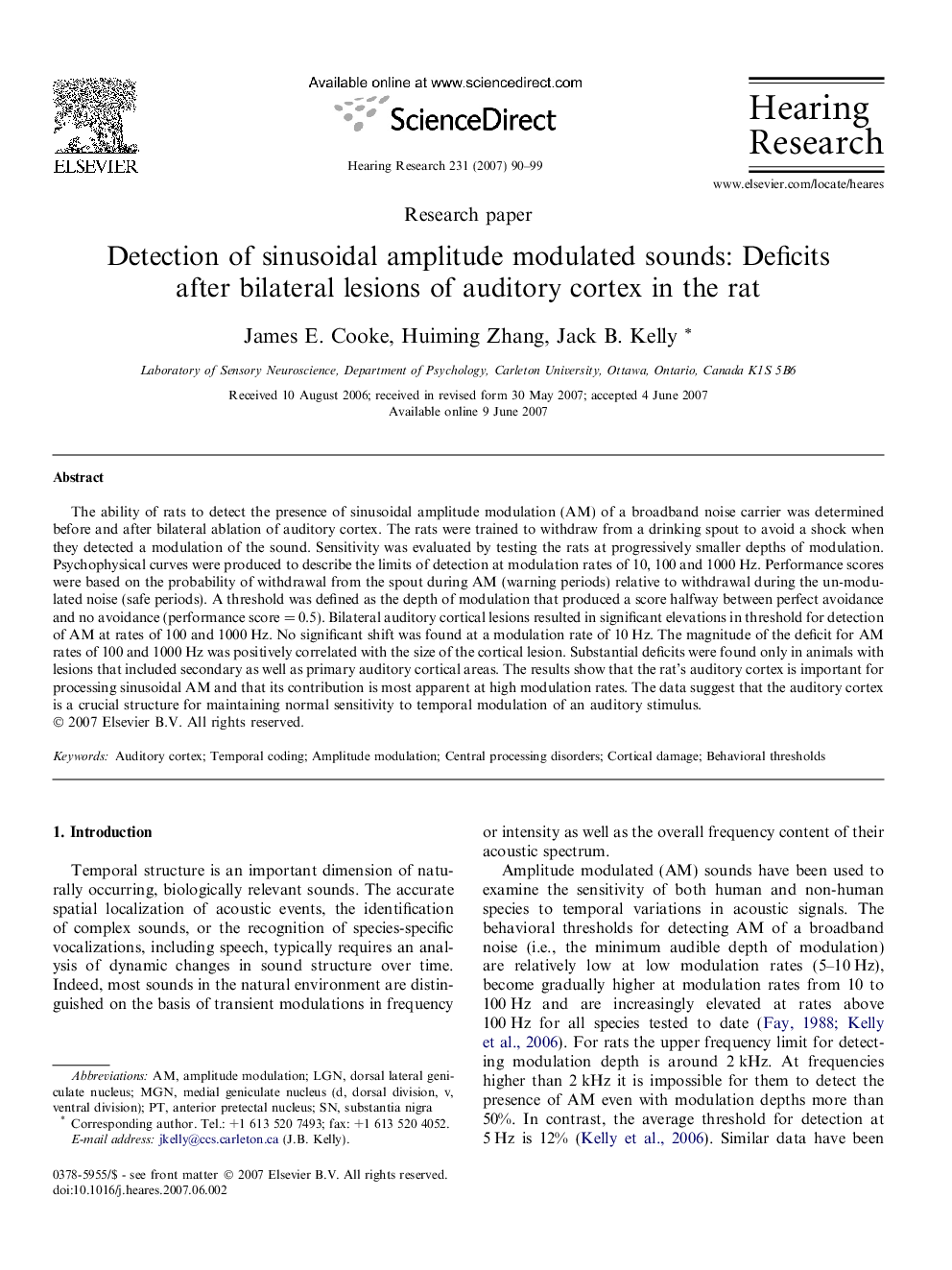| Article ID | Journal | Published Year | Pages | File Type |
|---|---|---|---|---|
| 4356188 | Hearing Research | 2007 | 10 Pages |
The ability of rats to detect the presence of sinusoidal amplitude modulation (AM) of a broadband noise carrier was determined before and after bilateral ablation of auditory cortex. The rats were trained to withdraw from a drinking spout to avoid a shock when they detected a modulation of the sound. Sensitivity was evaluated by testing the rats at progressively smaller depths of modulation. Psychophysical curves were produced to describe the limits of detection at modulation rates of 10, 100 and 1000 Hz. Performance scores were based on the probability of withdrawal from the spout during AM (warning periods) relative to withdrawal during the un-modulated noise (safe periods). A threshold was defined as the depth of modulation that produced a score halfway between perfect avoidance and no avoidance (performance score = 0.5). Bilateral auditory cortical lesions resulted in significant elevations in threshold for detection of AM at rates of 100 and 1000 Hz. No significant shift was found at a modulation rate of 10 Hz. The magnitude of the deficit for AM rates of 100 and 1000 Hz was positively correlated with the size of the cortical lesion. Substantial deficits were found only in animals with lesions that included secondary as well as primary auditory cortical areas. The results show that the rat’s auditory cortex is important for processing sinusoidal AM and that its contribution is most apparent at high modulation rates. The data suggest that the auditory cortex is a crucial structure for maintaining normal sensitivity to temporal modulation of an auditory stimulus.
